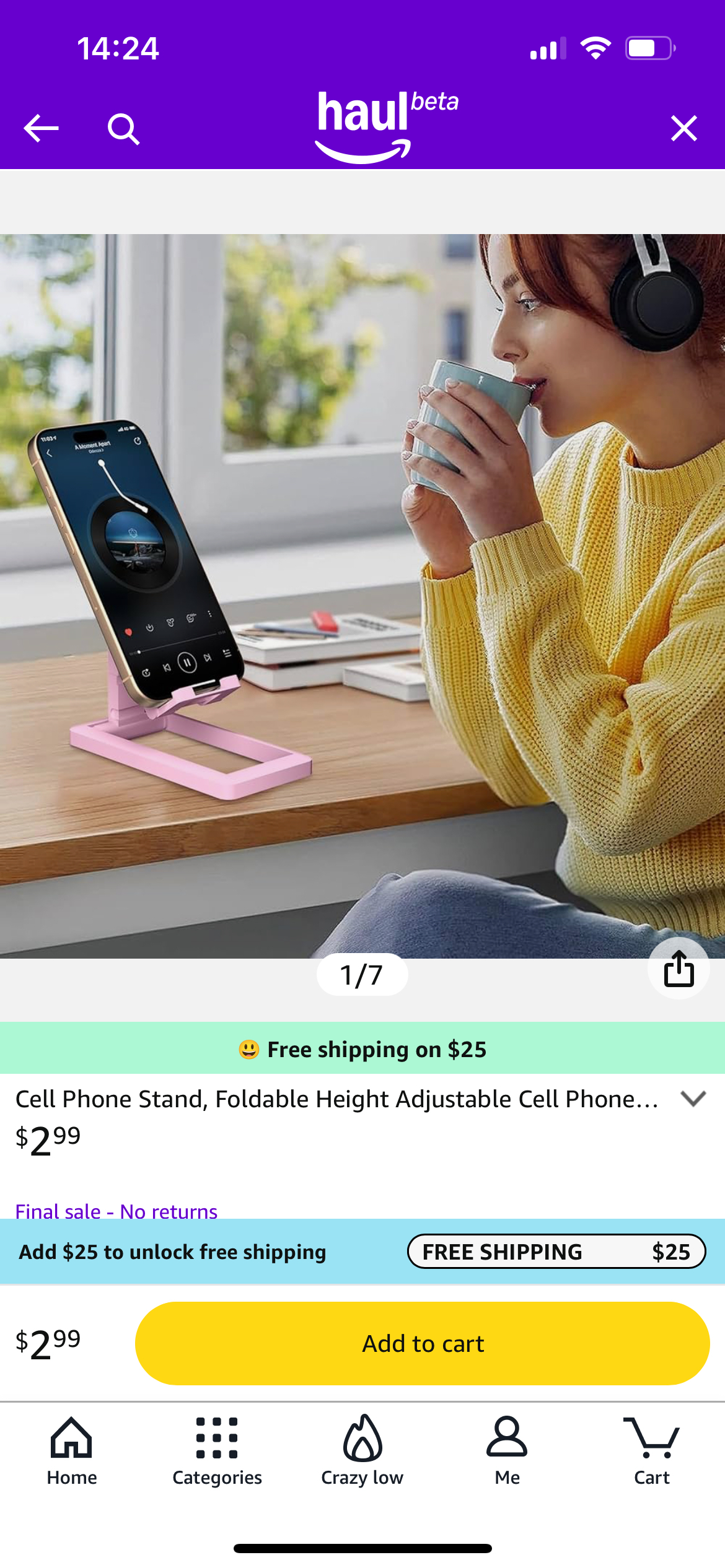Amazon’s Temu competitor Haul is an AI image wasteland

Amazon’s new service Haul is filled with economical products, low prices and even cheaper product photography. Indeed, it looks like many of the products being sold are not-so-artfully using AI to doctor the images.
Modern Retail reviewed many product listings on Haul and found numerous instances of seemingly AI-induced image issues, if not outright hallucinations. In one photo, for example, a phone stand is sitting on a desk in front of a woman, but, as shown, is the size of the woman’s forearm.

In another listing for a winter neoprene glove, a person is shown on a dock, fishing line in hand, but instead of battling a large bass, it’s a human-sized glove. One listing for a silicon baking brush shows the brush awkwardly in a person’s hand, painting jam on a single slice of bread — a very odd use of the product.

In addition to the seemingly altered images, many of the visual assets seem to run afoul of Amazon’s strict rules. For example, multiple phone cases on Haul showcased iPhones containing Apple’s logo, something that would usually result in a listing getting taken down and potentially a permanent ban, according to Lesley Hensell, co-founder of Riverbend Consulting.

In Hensell’s view, the proliferation of these shoddy images is indicative of the type of seller Amazon has been recruiting for Haul. “A lot of these Chinese manufacturers, they’re built for volume,” she said. The fact that Amazon has so far allowed these listings to remain up, she went on, is a bad look for brands on Amazon’s dominant marketplace. “It degrades Amazon as a platform when you allow that kind of stuff to happen.”
Some brands see Haul’s launch and seeming lawlessness as both a double standard, but not necessarily surprising. “When Amazon does a new initiative, they’re focused on the success of the new initiative and not focused on any rules or guidelines,” said Bernie Thompson, founder of the electronic product company Pluggable Technologies.
Thompson noticed other products that seemed to go against Amazon’s rules — namely, apparel products featuring racy photos of skimpy models. On Amazon’s third-party marketplace, Thompson said, those images would — at the very least — be taken down. Amazon’s specific rules for images forbids nudity and sexual conduct, but says that images “may feature semi-revealing attire (models showing bare skin without revealing any intimate parts or showing contours or simulation of sensitive areas) if modest and relevant to the product or service promoted.”
“It can be frustrating,” Thompson said. “Amazon is both very strict but also capricious with rule enforcement in general with sellers. Amazon is quick to suspend products, quick to suspend accounts. It’s very hard.”
Modern Retail reached out to Amazon and provided screenshots of the images. The company said it is investigating the listings and will take action as necessary. In a written comment to Modern Retail, a spokesperson said, “We have proactive measures in place to prevent non-compliant images from being listed. We continuously monitor our store and promptly address any issues that were undetected by our automated checks.”
Haul’s launch is happening in tandem with another major Amazon push: AI tools. For the last year, Amazon has been building and beta-testing a number of programs to help streamline seller efforts. These self-service tools let brands create audio and video ads, as well as imagery for product listings.
It’s unclear if these images on Haul were part of Amazon’s beta test or were made using other image-enhancing software.
The sellers that have tested these tools, however, have found some flaws. As Modern Retail previously reported, both agencies and brands have found some of the images created by the AI tools to be ultimately unusable. For example, Danielle Waller, global chief media officer at marketplace consultancy Podean, previously told Modern Retail about an instance where Amazon’s AI image tool put a toy car on a freeway rather than in a contextually-correct place like a playground or children’s room.
“The context just made no sense whatsoever,” Waller said. “If you really want your brand to have certain standards around brand imagery, AI just hasn’t gotten to it yet.”
Amazon, for its part, has said that its AI tools are being fine-tuned. “Our approach is to launch these tools in beta with some advertisers and then have them evolve quickly as the science and the underlying technology matures,” Jay Richman, vice president of Amazon Ads product and technology, said at the time.
Haul sellers, however, seem to have not gotten the memo to test AI images before hitting publish. Other U.S.-based agencies aren’t surprised that this is already a problem.
“There is a rush to get things up,” said Liran Hirschkorn, CEO and Founder of Incrementum Digital. “I’m not surprised to see a sea of low-quality AI images — it’s kind of to be expected.”
